History of Luggage, Trunks and other Travel Luggage
Egypt + Ancient Greece + Roman Empire + Middle Ages + Modern + XXs

Who Invented Luggage?
The ancient Egyptians around the year 1500 BC are considered the inventors of Luggage. For their trips they used chests and trunks that evolved into primitive suitcases made of fine wood and covered with animal fat or leather to make them waterproof.
The transfers were not for reasons of pleasure but religious or State, although not exempt from some scientific purpose. The luggage was very heavy. Heavy trunks and chests on carts with blood traction, which prevented them from moving quickly and agile.

What was luggage like in Ancient Egypt?
Soon the need was seen to exchange his heavy luggage for lighter ones. The first luggage and predecessor of the suitcase, was the skin of an animal sewn. The saddlebags that were thrown on the shoulders or on the horses that hung on both sides of the back of the horse or mule.
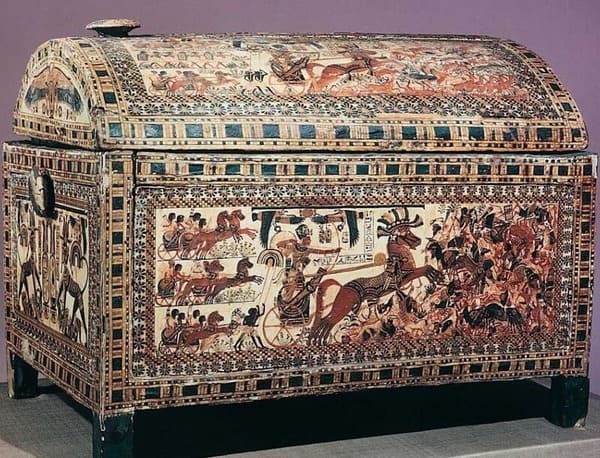
What did the Assyrians use as Suitcases?
The 5th century BC Greek historian Herodotus recounts that the Assyrians carried items in a baggy case hanging from their waists. When the use of currency spread around that time, the tie-neck bag was invented.
What was Luggage like in Ancient Greece?
The ancient Greeks inherited the Egyptian trunks made of light wood. covered with leather smeared with animal fat from the Egyptians. The Greeks painted the trunks and made them smaller to adapt them to both tourism and military expeditions. I call this new size chest. Keep in mind that trunks were used well into the 20th century.
The Greeks called birsa a kind of bag or skin made of leather that used to serve as a travel bag. It was small, no more than a foot long and a little less wide. The ancient Greeks liked to perfume themselves with various oils and essences, and quite often they bathed and shaved. All the elements were kept in a bag or birsa.
For purposes of military or tourist transfer, bags and backpacks were more used. They were to transport the essential and necessary. See history of tourism in ancient Greece.
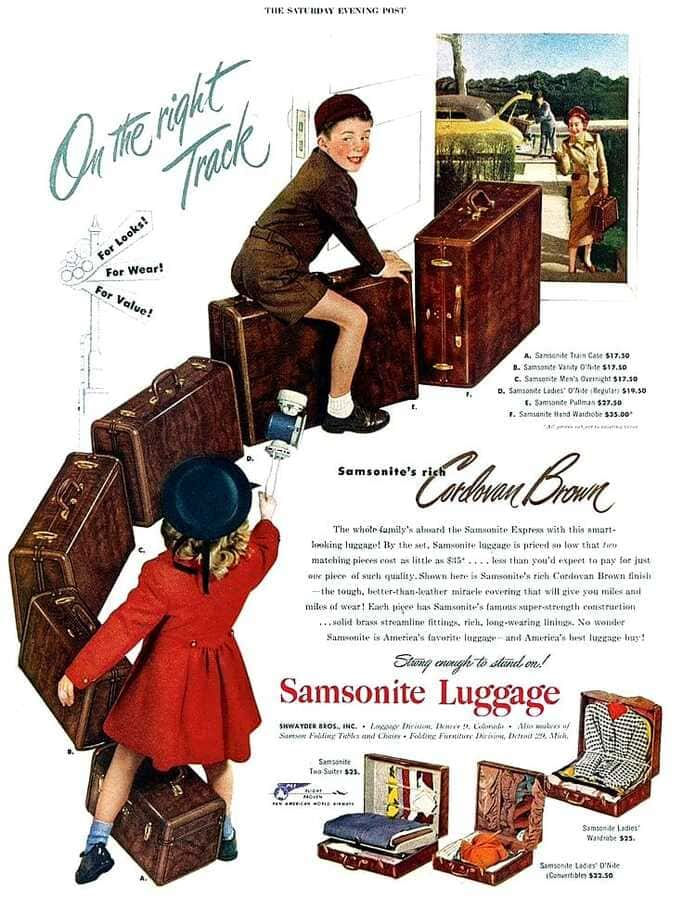

What was luggage like in Ancient Rome?
The Romans Latinized the name of the bag griefa and called it bursa. They also gave it the same use. Women, men and even children carried their personal effects in them. The poor people used as a bag a scrap of cloth, a piece of old cloth or a handkerchief with which they improvised a bundle that they tied to the wrist or hung from the neck. This primitive bag was an essential item for an important and obvious reason: until the 16th century, clothing did not have a pocket and that need had to be alleviated.
The leather bag, first and then cloth, was used to carry small essentials: coins, cosmetics, combs, keys. The bag used to be worn hanging from the belt or tied to the necklace hanging over the chest, if its content was not very heavy. However, the Romans preferred to set keys, tweezers, jewelry, etc. on a chain around his neck.
In the Middle Ages, bag sellers belonged to the same guild as porters: both made the same thing and used deerskin or sow’s udder for bags and suitcases destined for humble people. See history of tourism in ancient Rome.

How were Mario’s reforms on Military Baggage in Ancient Rome?
The ancient Romans revolutionized luggage, especially in the military, thanks to the reforms of Mario. The sarcina, personal luggage of the Roman soldier.
General Cayo Mario in his reforms introduced the norm that the soldiers, to increase the mobility of the army and gain speed, would carry a large part of their rations and equipment themselves. Such was the burden of the soldiers who became known as Marius’s mules.
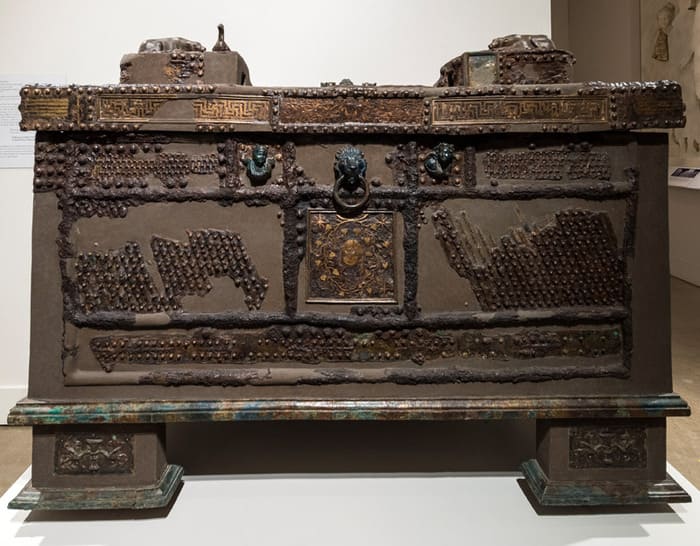
Each legion had a convoy with the equipment of some 500 to 550 mules (one mule for every 10 legionnaires). To prevent these convoys from becoming too large, Mario had his men carry as much equipment as they could, including his armor, weapons, and 15 days’ rations. To facilitate this, he gave each legionnaire a crossed staff to carry the load on his shoulders.
A typical legion of this period had about 4,000 to 5,000 legionnaires. Legions could have up to 6,000 soldiers divided into cohorts, although later in history the size was reduced to 1,000 to increase mobility.

Trajan’s Column
Thanks to Trajan’s column we can know the appearance of the marching suitcase or sarcina.
In Trajan’s column, various types of bags appear at the top of the column. A small bag (pear), probably made of leather, must have contained the personal effects of the soldier (razor, knife, spoon, oil lamp, money, etc.), but also some of the rations that do not fit in the net provision and that they fear bad weather – beans, cheese (caesus), salt to avoid dehydration, etc.-.
The large bag (mantica), comparable in shape to a sailor’s bag, is more likely to contain spare clothing (tunics, shoes, etc.) or small tools.
The sarcinas hang from a furca (wooden stick). The package must allow the legionnaire to be as autonomous as possible. He must take food and drink for a few days, spare clothes and all the utensils that will allow him to dig and build the fortifications of the camp.

Legionnaire’s Pack Contents – History of Backpacks
In the package or bag, the soldier must have objects that allow him to cook because at that time there is no general dining room. He must have a bronze or wooden frying pan (patera) to serve as a plate and to make his bread (panis) or hard biscuits (buccelatum) from his ration of wheat (frumentum). Stews, made from smoked meat (laridum) or soups can be cooked in a larger cauldron (vasa or situla).
During the campaigns, pure wine is prohibited, it is replaced by sour wine (acetum) or by a drink that mixes water and vinegar (posca). These liquids are probably contained in a container (flask) made of leather (utres). To allow regular and accessible hydration.
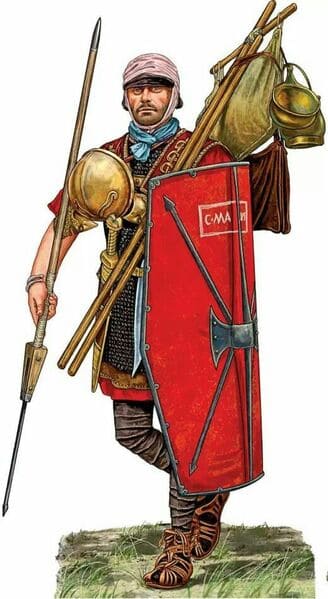
How is the History of the bag in the Middle Ages?
In the Middle Ages the bag underwent many changes. The long and narrow leather bags, about 10 inches wide and 14 inches long, were the most widely used.
The bag that was used in the Middle Ages was made with deerskin, pig or sow’s udder. These were the bags that were made by the influential pursers’ guild in Paris in the 13th century for the use of villains, since the upper class had embroidered cloth bags.
These medieval bags were closed with two cords whose ends hung from the mouth of the bag and opened by means of another, with which it was hung from the waist. They were small works of art that were often embroidered in gold. Some of these bags were lined with rabbit fur to store the finest objects.

Documents from the end of the 15th century speak of silk bags and reliquary bags embroidered with religious motifs enriched with pearls and gold from Cyprus. Some were adorned with silver bells. This was an alarm against occasional break-ins.
The bag was used a lot; both the man and the woman. Ordinary people did not go out without their boar skin bag hanging from their waist, it was an inseparable piece of male and female attire in the fifteenth century. Remember that the garments did not have pockets
Of this type of bag there were of all price and quality; the most artistic were the Italian ones, full of ribbons, cords and trimmings, lobed or half-circle in shape. It should be noted that some of them were authentic works of art.
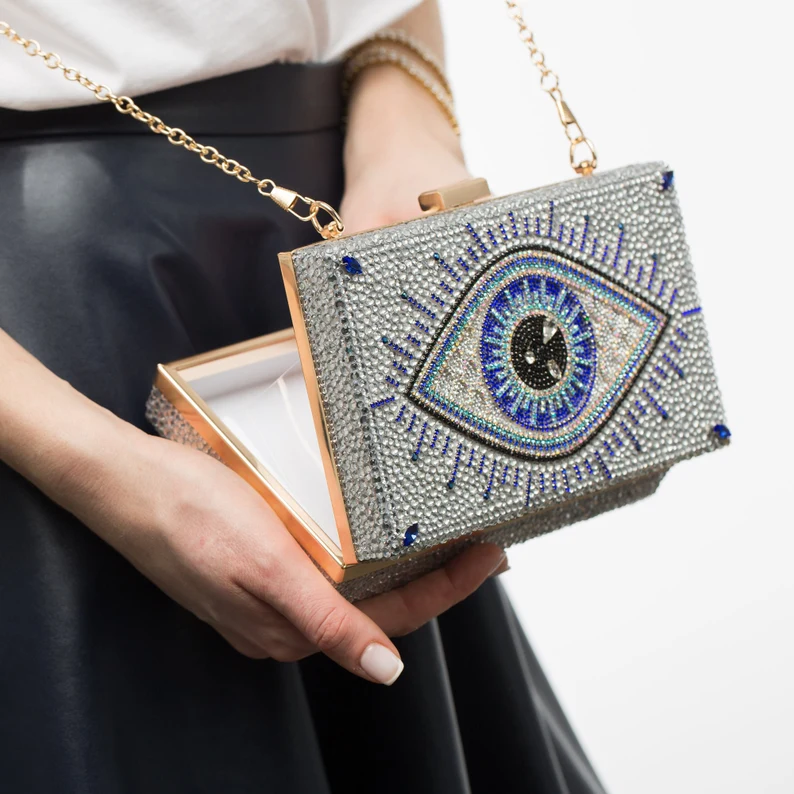
The middle age and the Luggage
In the Middle Ages, bag sellers belonged to the same guild as suitcase manufacturers. Both made the same thing and used deerskin or sow’s udder for bags and suitcases for humble people. The pieces of luggage of the wealthiest classes continued to be the ark and the wooden trunk, since they were not the ones who had to carry it, but rather the servants.
The hand luggage consisted of small bags of soft fabric where they kept the most necessary or most frequently used. They were objects for makeup, prayer, recreation, a silk scarf and coins. The Countess of Artois received as a unique wedding gift a dozen Saracen cloth suitcases made in Spain in 1298, large and spacious, capable of accommodating the robes and ample dresses of her owner. See history of tourism in Middle Age.
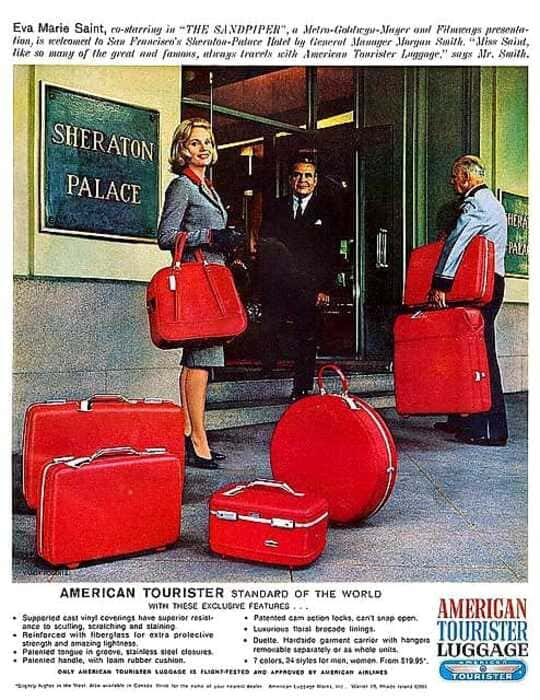
What was luggage like in the modern age?
History of luggage in the 15th and 17th century
During the 16th and 17th centuries, the bag was filled with ornaments, charms and details that made it a small work of art. Upper-class ladies gave a bag as a souvenir or token of esteem to their friends. Many times they were cute little bags embroidered by themselves. An important service or a debt was delivered by hand in a closed leather bag inside which there were usually gold or silver coins.
The mystery bag became famous whose interior had secret compartments for jewelry, money, ointment bottles, perfumes, or whatever needed to be kept secret. These bags were especially used by upper class ladies. See history of tourism iof traveler Checks.

What was the history of luggage in the eighteenth century?
In the 18th century, a new bag model was born: the wallet-style bag. It was made of various materials such as silk or leather. Originally it was used by both women and men to carry documents. In this century, the bag became part of textile fashion and played a fundamental role in women’s clothing. Over the years, they began to be embellished with embroidery.
They were highly appreciated, so much so that some women, when they died, left them as an inheritance for relatives or friends. These bags were used to carry personal items, but not to carry money, since there was another type of bag for that purpose: the one that would be the forerunner of the wallet or wallet as we know it today.

History of the Luggage & Bag in the 19th century
At the beginning of the 19th century, bags were manufactured in such a way as to satisfy the numerous changes that women’s clothing was developing. For this purpose, the first line of bags designed to be able to transport women’s things, but according to the social class to which she belonged, emerged. Objects such as makeup tools, cards, handkerchiefs or fans. They became an indispensable accessory for the ladies of England.
The first travel bags appeared in the mid-19th century. They were travel suitcases but in miniature and provided with a practical and quick opening and closing system, with a “secret” compartment and a key.

Embroidered bags were very popular in the early 19th century. They were decorated with different allusive themes inspired by sculpture, literature, history, elements of flora and fauna or inspired by famous paintings. All of them were highly sought after between 1820 and 1860. Some of these bags were made from pieces of embroidered cloth or even wall hangings. The frames could be made of steel, silver or gold and inlaid with precious stones.
Little by little, the trunk as it had been built until that moment disappeared. The wooden body, often lined with leather and often with an iron base, gradually lost its validity. Over time, these early boxes were perfected by craftsmen. Consequently they designed boxes of a more manageable size. That is why they were accompanied by hinged openings, and the outer parts were covered with wool or fur.

Later they added locks, straps, latches and a handle at the top to be able to grab it comfortably. Thus the suitcase was born. At first it was designed to transport, without wrinkles, the tuxedos of the wealthy classes. It was also equipped to wear shirts and small hats.
Louis Vuitton: History of Trunks & Luggage

Louis Vuitton was born in 1921 in Anchay (France) and moved to Paris when he was just 16 years old. He worked in Paris as an apprentice to Romain Maréchal, who made the luggage for the guests of the Hotel Le Meurice.
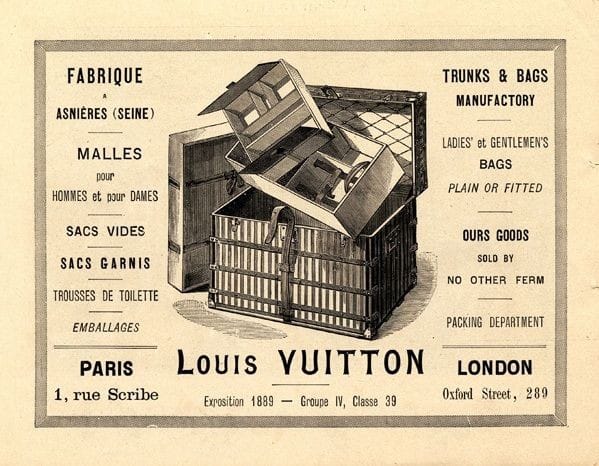
After working with Monsieur Maréchal for 17 years, Louis Vuitton became independent. and created his own brand, with his name, as it is known today. Louis Vuitton is considered the creator of the first modern clapboard trunk, widely used in tourist travel in the 19th and early 20th centuries. Later, with the rise of pleasure trips, he decided to make a more practical and manageable trunk. He also created suitcases, stackable luggage and handbags for ladies. Here you can read the history of the designer Louis Vuitton.
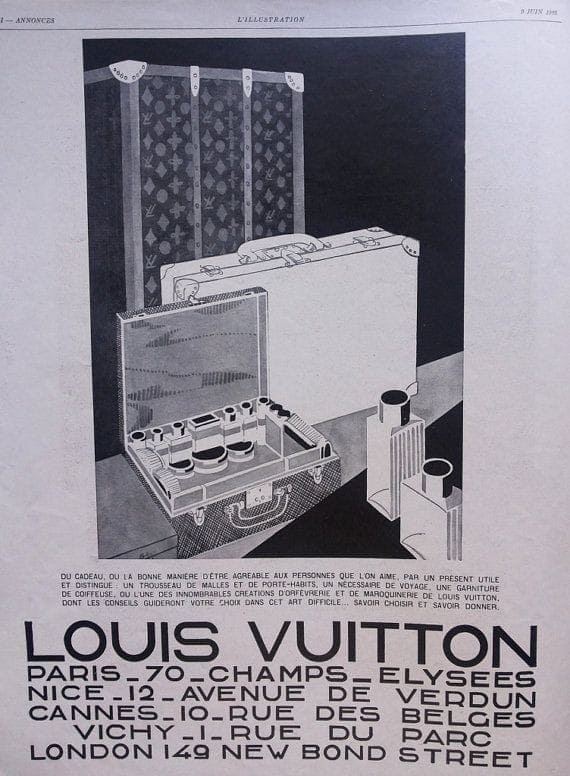
History of Samsonite & Jesse Shwayder
Jesse Shwayder was born in 1882 in Blackhawk, Colorado, USA. When he turned 11, his family moved to Denver, where his father opened a second-hand furniture store. As the business was not going well, Jesse convinced his father to close and open a luggage store.


Shwayder proved to have great business conditions, a fact that caught the attention of the leading US luggage manufacturer, Seward Trunk and Bag Company. He moved to New York to work for that company and, in 1910, when he returned to Colorado, he opened a trunk manufacturing store, Shwayder Brother’s Incorporated, together with his brothers.
In 1939 the company designed a high-impact suitcase that he baptized with the name Samsonite, made of vulcanized fiber. The Samsonite suitcase was a huge success, and in 1965 the Shwayder Company changed its corporate name, from then on it was called Samsonite.
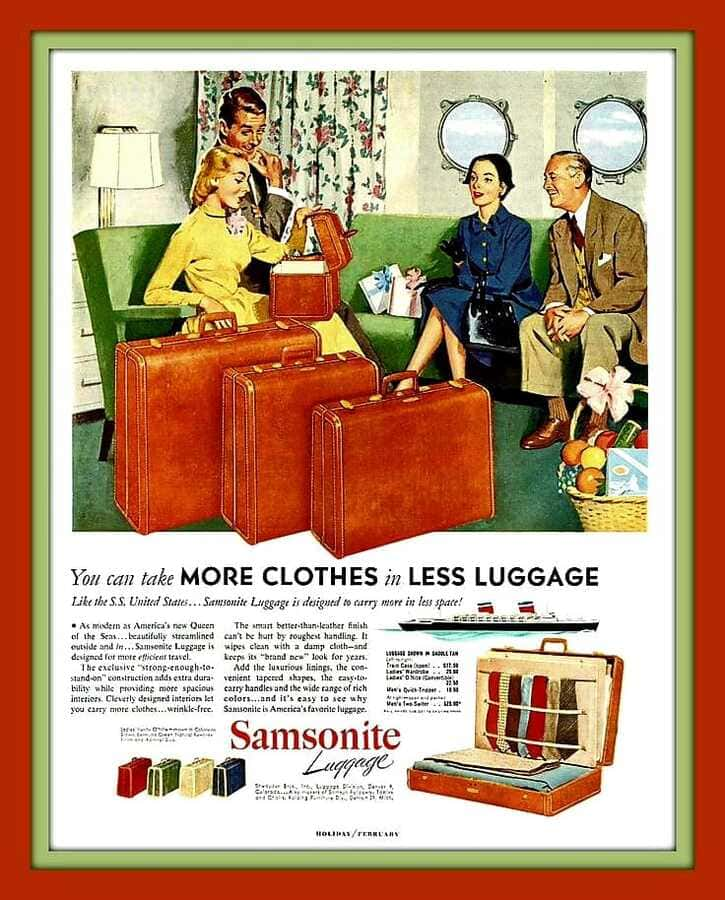
Since 2000, reducing weight has been the goal of the Samsonite brand, which has used everything from polycarbonate to the proprietary curv material (the same one used in bulletproof vests). The colors and lines of this sample are, at the same time, a journey through fashion and design of the last hundred years.
History of Bags: Whiting and Davis Company Baggage
The first bags with metal mesh and framed with precious stones began to be manufactured in 1820 by goldsmiths. But the great boom in these types of bags was thanks to the metal bag company Whiting and Davis Company, which had its facilities in Pennsylvania, Massachusetts.
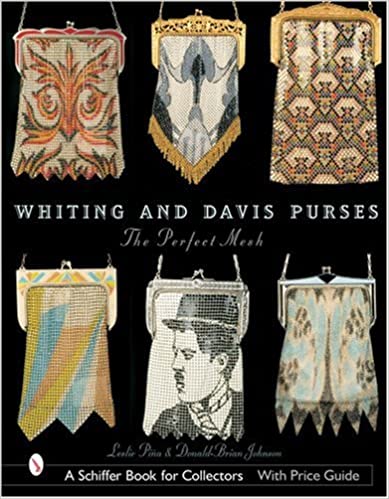
This firm was founded in 1876 as a typical jewelry company. His first name was Wade, Davis and Company; but after 4 years, in 1880 Charles Whiting merged the company.
For over 100 years, the Whiting and Davis Company has been the creator of extraordinary metal bag designs. His designs included compartments to carry wallets, cigarettes, cosmetics and jewelry.
Late 19th Century Luggage
20th century luggage
After the Second World War, the boom in tourism was accompanied by a flourishing in the assortment and quality of travel accessories.
The increasing use of aircraft, with its associated volume and weight limitations, made it necessary for suitcases to become lighter and more intelligently designed. Without fiberglass and plastic it would not have been possible.
Obtaining new materials was used by suitcase manufacturers, who mass-produced them with previously unthinkable products, such as cellulose acetate and polyester. It was successive and rapid discoveries and innovations of new types of material that made modern luggage possible.
History of Suitcase: Evolution of the suitcase in the 20th century
The history and evolution of the suitcase underwent an accelerated evolution in the 20th century The change in format, from trunk to suitcase, gained momentum in the 1920s with the rise of automobile travel, and increased in the 1930s, when commercial flights became more important. The robust and heavy suitcases were not suitable for transporting them by car and even less by plane, therefore lighter suitcases were designed that also lowered their price.
Who invented the suitcase with wheels?
In 1970, American Bernard Sadow had a revolutionary idea while lugging two heavy suitcases through an airport on his way back from a family vacation in Costa Rica. Waiting at customs he watched a worker effortlessly roll a heavy machine on a roller skid. Two years later, he patented the rolling suitcase.

In 1987, Bob Plath, a pilot for Northwest Airlines went a step further: he created the first travel suitcase with wheels and an extendable handle. Such was the success that, in just a couple of years, practically everyone had one of them. In fact, it is more than likely that you also have it in your home. And, if not, that you are looking to buy it. In any case, it was a turning point in the history of travel bags.
Today travel suitcases are becoming more modern and sophisticated. In this sense, it is possible to find them made of plastic that hardly weigh, with telescopic handles, with safety locks, with specialized compartments and with endless additional features.
The suitcase has continued to adapt to the needs of travelers, meeting the safety standards required by the authorities. As a result of catastrophic situations that have occurred over the years, such as the terrorist attack of September 11, 2001 in the US, suitcase manufacturers have had to adapt their designs to international security requirements.
What was the History of bags in the 20th century?
At the turn of the 20th century, the bag became almost a mere accessory that had to match shoes and dress. They had, in regard to contemporary times, their culminating moment in the decades of the ’40s and ’50s; it gave tone, conferred elegance to the woman who knew how to put it together.
Dressmakers, perfumers, jewelers, a huge number of fashion developers like Hermès put their ingenuity at the service of the bag. Parisian Hermès created a bag that became classic in the hands of Grace Kelly.
Marlene Dietrich ordered her shoes and bag from the same firm to match. But a disciple of Pierre Cardin, Jean Paul Gaultier, was the one who was most revolutionary, creating pan bags, daring backpacks and tiny bags.
Hubert de Givenchy also designed curious outfits for Audrey Hepburn in leather, patent leather, nylon. A milestone in the history of bags. In the sixties, the bag fell almost cornered before the strength of the backpack, the jacket, the tights. Although at the beginning of the 21st century it is back in fashion.

Technological Trends in Suitcases
Incorporation of USB ports to be able to charge our technological devices. Finally, a very practical curiosity that will form part of the history of the suitcase is the self-weighing suitcase. You will be able to know exactly the weight of your luggage, avoiding unpleasant surprises when you arrive at the airport.


Find out what can and cannot be carried in luggage when traveling by plane
What can be carried in hand luggage?
Internationally, the liquid limit is up to 10 containers of a maximum of 100 milliliters each. Food can always be brought, but if it is fresh (fruits, vegetables, etc.) it cannot be taken off at the destination but must be consumed on the plane. Even so, after passing the control, you can buy food and drinks. For more information you can see it here
Here see what is allowed in medications
Sources
-
Tags
- Evolution of luggage
- Historical luggage styles
- Ancient travel containers
- Early forms of luggage
- Trunks and chests in history
- Luggage in the Middle Ages
- Renaissance travel accessories
- Luggage during the Industrial Revolution
- Introduction of suitcases
- Impact of the steamship on luggage
- Luggage in the Victorian era
- Travel trunks and their features
- Luggage innovations in the 20th century
- Role of airlines in luggage design
- Modern luggage trends







